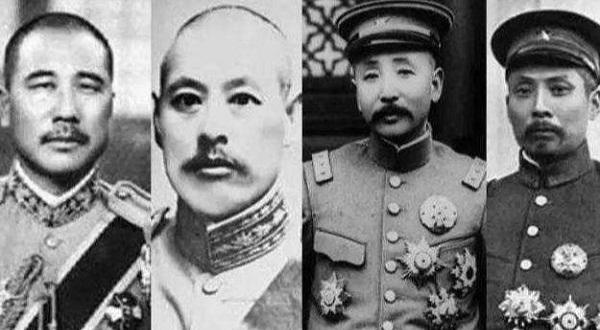In the early twentieth century, the Qing government had just collapsed, and China was still in a relatively turbulent period, which is known as the Republic of China period. During the Republic of China period, the Beiyang government had not yet established jurisdiction, and the warlord forces in various places did not obey anyone, and the nominal Beiyang government could not restrain them at all. So, at that time, the measure of power was who had more guns and who had more people. In order to appease these local warlords, the Beiyang government had to make them the governors of various jurisdictions, such as the overseers or governors of a province.

Literally, many people may think that the governor must be the boss, and the overseers have to listen to the governor's face. In fact, this is not the case, the Overseer, as the name suggests, is in charge of the army, but what is the situation in the Republic of China? That is, whoever has the most troops will be strong. Therefore, the governor is the second-in-command of a province, and the real power is still in the hands of the overseer. To give you an example, in the early 1930s and early 1940s, there was a time when the national president was Lin Sen, but who was the most powerful person at that time? Chiang Kai-shek, why is he bigger than the president? Because he has an army in his hands.
In fact, in the early days of the establishment of the Beiyang government, Yuan Shikai served as the president, and the major warlords did not dare to do so obviously, after all, Yuan Shikai was the biggest warlord. The governors of various places have yuan shikai as the backing, and the overseers do not dare to act too arbitrarily, and the relationship between the two is quite harmonious, and no one has to go out of their way to please anyone.
Moreover, the positions of Overseer and Governor were not tenure-based, and during the Republic of China period, officials were transferred frequently. Therefore, the overseers in the early days of the Republic of China did not have the scenery of the future, after all, first of all, there was a Restriction by the Beiyang Government, and secondly, no one knew whether they would be transferred in a few days, so naturally there was no need to be too blind.
However, after Yuan Shikai's death, the warlord forces in various places appeared to be a bit scattered, and no one in the Beiyang government was qualified to order them. It seems that the overseers of each province are obeying the orders of the Beiyang government, but in fact they have already made their own small calculations in their hearts. The Beiyang government is already in chaos, and the turmoil is not far away, and it is the last word to have more troops in hand. At first, the Overseers were not very rampant on the surface, and the governors of the provinces also had a certain amount of power. Over time, the major warlords began to act independently, and the Republic of China became the republic of warlords, and the governor of the province was meaningless. In this way, both military and political power were held in the hands of the provincial overseers.
Regarding the gradual control of regional power by the Overseers, there is a very typical example, that is, Zhang Zuolin, the king of the northeast. Zhang Zuolin was initially transferred to Fengtian Province, where it is said that he had a division in his hands. But actually? The total number of this so-called division is not only less than 10,000 people, but most of them are from bandit origin. In fact, Zhang Zuolin himself knew his own shortcomings, so he wantonly annexed the bandit forces around him, but the population increased, and the combat effectiveness still did not change. Later, he decided to develop the economy first so that he could have enough money to raise a better army.
To make money, Zhang expanded trade with Japan and the Soviet Union. I have to say that there is a reason why Zhang Zuolin can dominate for a while, his vision is very long-term, after having money, he still focuses on the development of the military, spending a lot of money to import the most advanced weapons from Europe. In 1926, Zhang Zuolin had an army of more than 200,000 people, equipped with the most advanced weapons, and the combat effectiveness was the highest in the Republic of China. It is worth mentioning that we know that later japan invaded our country first into the northeast, and when Zhang Zuolin was alive, the Japanese did not dare to act rashly, and it was not until the design killed Zhang Zuolin that the Japanese dared to take further action.
In general, most of the time during the Republic of China period, the governor was only a false name, and the real person in the center of power was still the person who held the military power, which has been the case since ancient times. Even in ancient times, rebels were often heavily armed.